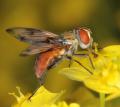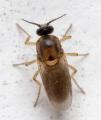Diptera.info :: Identification queries :: Diptera (adults)
|
Tachinidae in action, almost
|
|
| rvanderweele |
Posted on 12-12-2006 22:06
|
|
Member Location: Leiden, the Netherlands Posts: 1988 Joined: 01.11.06 |
Hello everybody, I took attached pictures last summer in the Dordogne. For the Tachinidae lovers among us: is it possible to draw conclusions concerning its id? If required I have more photo`s. A pity I was unable to make photo`s of the oviposition itself rvanderweele attached the following image: 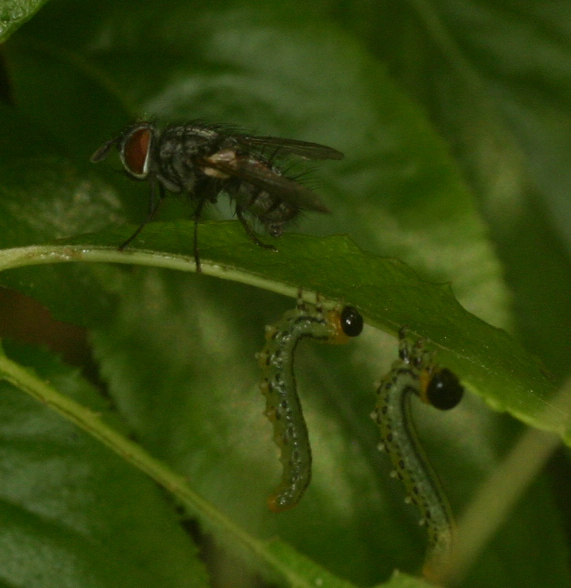 [169.51Kb] ruud van der weele rvanderweele@gmail.com |
|
|
|
| Paul Beuk |
Posted on 12-12-2006 23:11
|
|
Super Administrator Location: Netherlands Posts: 19403 Joined: 11.05.04 |
Well, if there are tachinids parasitising the larvae of Symphyta, this narrows down the options considerably if these larvae were to be parasitised, as the larvae are not regular caterpillars. 
Paul - - - - Paul Beuk on https://diptera.info |
| rvanderweele |
Posted on 12-12-2006 23:35
|
|
Member Location: Leiden, the Netherlands Posts: 1988 Joined: 01.11.06 |
yes, Paul, you make me curious. Please, say what is it? 
ruud van der weele rvanderweele@gmail.com |
|
|
|
| Paul Beuk |
Posted on 13-12-2006 07:20
|
|
Super Administrator Location: Netherlands Posts: 19403 Joined: 11.05.04 |
I dunno. Like I wrote elsewhere: I am no tachinid specialist. 
Paul - - - - Paul Beuk on https://diptera.info |
| rvanderweele |
Posted on 13-12-2006 09:15
|
|
Member Location: Leiden, the Netherlands Posts: 1988 Joined: 01.11.06 |
I was just kidding! I believe some Exorista species and a Bessa species is paratising on Hymenoptera?
ruud van der weele rvanderweele@gmail.com |
|
|
|
| Zeegers |
Posted on 13-12-2006 10:34
|
|
Member Location: Soest, NL Posts: 19116 Joined: 21.07.04 |
Well, I'm sorry, but the picture is not good enough to make a guess. Theo |
|
|
|
| Zeegers |
Posted on 13-12-2006 10:34
|
|
Member Location: Soest, NL Posts: 19116 Joined: 21.07.04 |
Well, I'm sorry, but the picture is not good enough to make a guess. Theo |
|
|
|
| rvanderweele |
Posted on 13-12-2006 10:49
|
|
Member Location: Leiden, the Netherlands Posts: 1988 Joined: 01.11.06 |
Theo, I have more photo`s of the animal. What details do you need in particular? I made a long series of photo`s, while observing the fly. This one, however, was the only pictures which showed more or less clearly the fly and the host. ruud van der weele rvanderweele@gmail.com |
|
|
|
| ChrisR |
Posted on 13-12-2006 11:06
|
|
Super Administrator Location: Reading, England Posts: 7703 Joined: 12.07.04 |
Lovely tach/host photo but for an ID we need to see the head very clearly (are the eyes hairy? what's the arrangement of facial bristles? is the back of the head with white or black hairs?) also the arrangement of the scutellar bristles and abdomenal bristles is important ... and the bristles on the mid-tibia.  |
| rvanderweele |
Posted on 13-12-2006 11:13
|
|
Member Location: Leiden, the Netherlands Posts: 1988 Joined: 01.11.06 |
I`ll see what I have, this evening. ruud van der weele rvanderweele@gmail.com |
|
|
|
| rvanderweele |
Posted on 13-12-2006 19:26
|
|
Member Location: Leiden, the Netherlands Posts: 1988 Joined: 01.11.06 |
another picture
rvanderweele attached the following image: 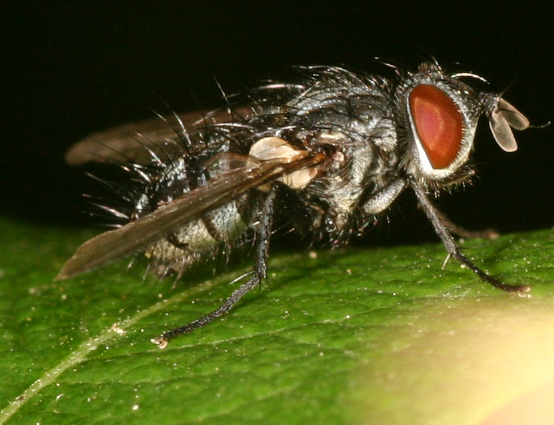 [155.32Kb] ruud van der weele rvanderweele@gmail.com |
|
|
|
| rvanderweele |
Posted on 13-12-2006 19:27
|
|
Member Location: Leiden, the Netherlands Posts: 1988 Joined: 01.11.06 |
and another
rvanderweele attached the following image: 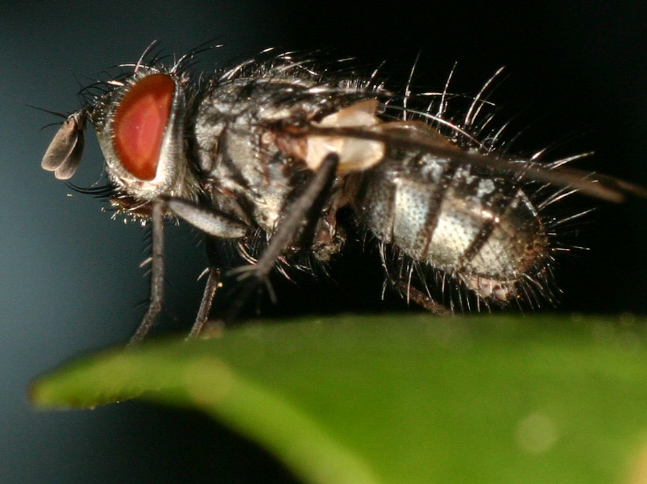 [178.01Kb] ruud van der weele rvanderweele@gmail.com |
|
|
|
| rvanderweele |
Posted on 13-12-2006 20:45
|
|
Member Location: Leiden, the Netherlands Posts: 1988 Joined: 01.11.06 |
Not a clear one, but here you can see she is laying eggs ( I presume she is oviparous)
rvanderweele attached the following image: 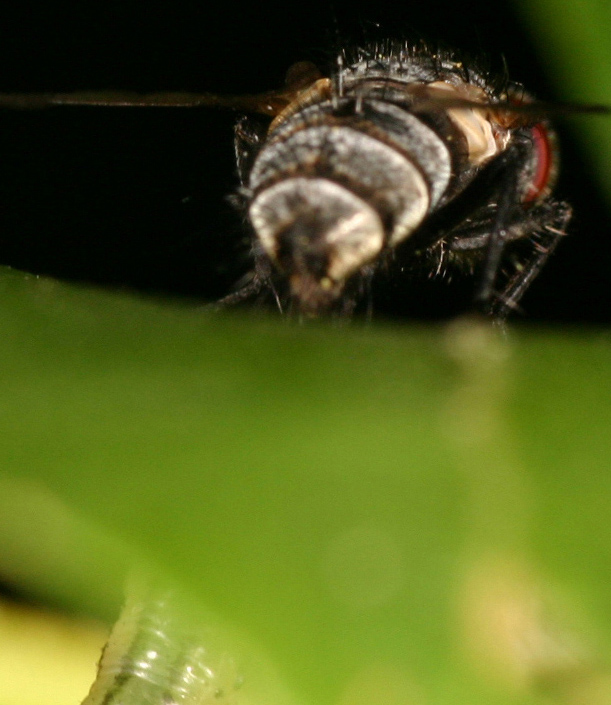 [191.4Kb] ruud van der weele rvanderweele@gmail.com |
|
|
|
| rvanderweele |
Posted on 13-12-2006 20:47
|
|
Member Location: Leiden, the Netherlands Posts: 1988 Joined: 01.11.06 |
again, not very clear, between her victims
rvanderweele attached the following image: 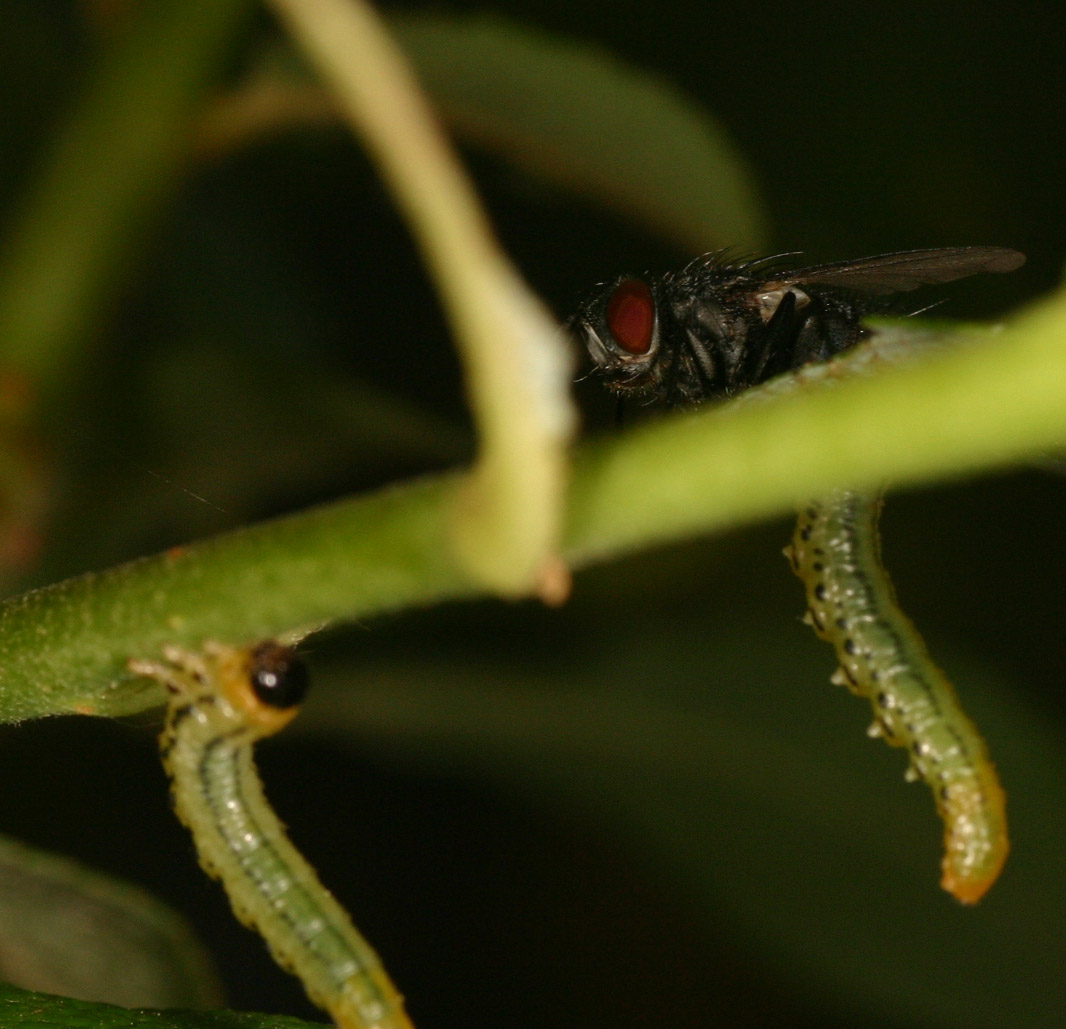 [187.91Kb] ruud van der weele rvanderweele@gmail.com |
|
|
|
| Zeegers |
Posted on 13-12-2006 21:55
|
|
Member Location: Soest, NL Posts: 19116 Joined: 21.07.04 |
HI Ruud Nice pictures of the action ! So, question: were the eggs actually laid on the hosts, or on the plant nearby the host. It would seem the last ? In that case, we are probably dealing with a Goniini. Otherwise, it is still difficult to give a name. the praealar bristle seems long, best seen in second picture. It is out of focus, but it is long. (it seemed short in the first). the general habitus reminds me of Myxexoristops blondeli. Good news: this is a Goniini on Symphyta. Bad news: it seems the the formation of the bristles on the humeri doesn't fit. Maybe I'm tricked by the view of angle. And, I would like to see the middle tibia: does it have 1 or more anterodorsal setae ? That would help Greetings Theo |
|
|
|
| rvanderweele |
Posted on 13-12-2006 22:09
|
|
Member Location: Leiden, the Netherlands Posts: 1988 Joined: 01.11.06 |
Well, Theo, I checked but I am afraid I do not have a good, clear pic of the humeri or tibiae. I have a dorsal one, which isn`t very sharp, but the wings are more or less visible. Does this help? rvanderweele attached the following image: 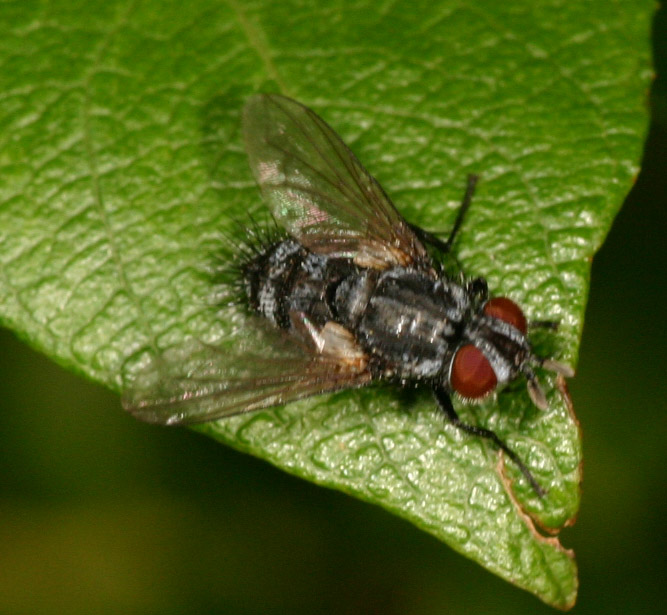 [125.12Kb] ruud van der weele rvanderweele@gmail.com |
|
|
|
| Zeegers |
Posted on 13-12-2006 22:27
|
|
Member Location: Soest, NL Posts: 19116 Joined: 21.07.04 |
Well, all pieces help ! I see 1 ad on the mid tibia, but very difficult to see. then again, the humeral bristles seem really inconsistent with Myxexoristops. I still have figured out the scutellar bristles. Which means they are either small or erect, probably. Or, the praealar is small and it's a Blondeliini after all. So, let me think till tomorrow. Theo |
|
|
|
| Zeegers |
Posted on 14-12-2006 09:07
|
|
Member Location: Soest, NL Posts: 19116 Joined: 21.07.04 |
Hi Ruud You didn't answer the question about the spot of oviposting: On the prey or on the plant ? Theo |
|
|
|
| rvanderweele |
Posted on 14-12-2006 09:30
|
|
Member Location: Leiden, the Netherlands Posts: 1988 Joined: 01.11.06 |
Hello Theo, as far as I could see it was on the plant, not on the host. ruud van der weele rvanderweele@gmail.com |
|
|
|
| Zeegers |
Posted on 16-12-2006 14:58
|
|
Member Location: Soest, NL Posts: 19116 Joined: 21.07.04 |
So, I checked the literature. Given what we know of the biology, there are two likely candidates: Myxexoristops Bessa selecta. Bessa probably lays its eggs on the host. Moreover, the picture definitely does not agree with Bessa. So, I return to my gut feeling: Myxexoristops blondeli. Maybe the point of view is misleading, as far as the humeral bristles are concerned. Theo |
|
|
|
| Jump to Forum: |





